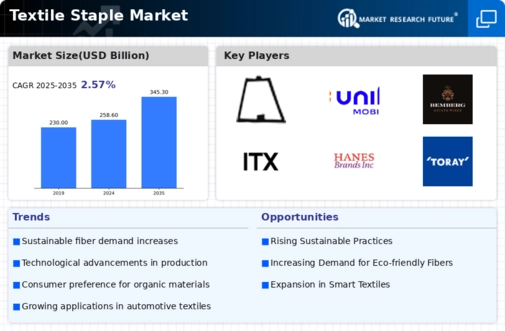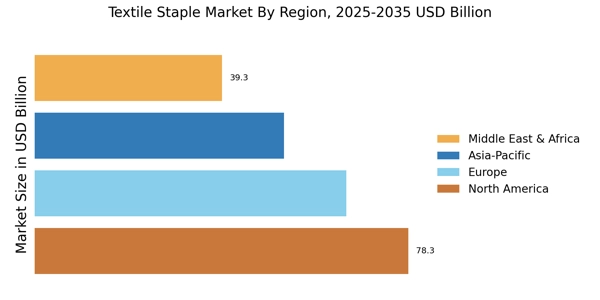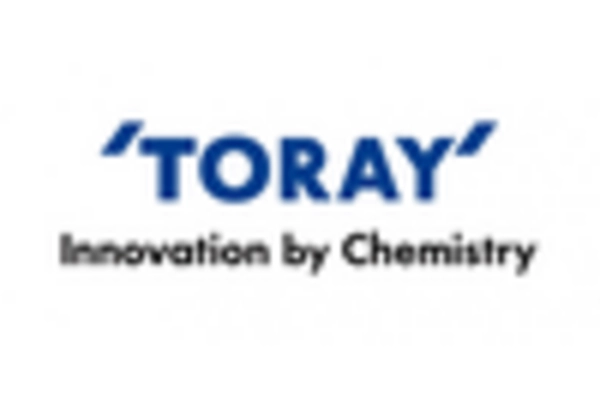Sustainability Initiatives
The Textile Staple Market is increasingly influenced by sustainability initiatives. As consumers become more environmentally conscious, there is a growing demand for sustainable textile products. This shift is prompting manufacturers to adopt eco-friendly practices, such as using organic fibers and reducing water consumption during production. According to recent data, the market for sustainable textiles is projected to grow at a compound annual growth rate of 9.7% through 2027. This trend not only aligns with consumer preferences but also encourages innovation in the Textile Staple Market, as companies seek to differentiate themselves through sustainable offerings.
Technological Advancements
Technological advancements play a pivotal role in shaping the Textile Staple Market. Innovations in fiber production, such as the development of high-performance synthetic fibers, are enhancing the quality and functionality of textiles. Additionally, automation and digitalization in manufacturing processes are improving efficiency and reducing costs. For instance, the integration of artificial intelligence in supply chain management is streamlining operations and enabling better inventory control. These advancements are expected to drive growth in the Textile Staple Market, as companies leverage technology to meet evolving consumer demands and enhance product offerings.
Emerging Market Opportunities
Emerging market opportunities are becoming increasingly relevant for the Textile Staple Market. Regions such as Asia-Pacific and Latin America are witnessing rapid urbanization and rising disposable incomes, leading to increased demand for textiles. The Asia-Pacific region, in particular, is projected to account for a significant share of the market, driven by a burgeoning middle class and changing consumer preferences. This trend presents a lucrative opportunity for manufacturers to expand their presence and cater to diverse consumer needs. As these markets continue to develop, the Textile Staple Market is likely to experience substantial growth.
Regulatory Compliance and Standards
Regulatory compliance and standards are increasingly shaping the Textile Staple Market. Governments worldwide are implementing stricter regulations regarding textile production, focusing on environmental impact and labor practices. Compliance with these regulations is essential for manufacturers to maintain market access and consumer trust. For instance, the introduction of standards such as the Global Organic Textile Standard (GOTS) is influencing production practices and encouraging transparency in the supply chain. As companies adapt to these regulatory frameworks, the Textile Staple Market is likely to see a shift towards more responsible manufacturing practices, which could enhance brand reputation and consumer loyalty.
Consumer Preferences for Natural Fibers
Consumer preferences for natural fibers are significantly impacting the Textile Staple Market. There is a noticeable shift towards organic and biodegradable materials, as consumers seek products that are not only comfortable but also environmentally friendly. Cotton, linen, and wool are gaining popularity due to their sustainable attributes. Recent surveys indicate that over 60% of consumers are willing to pay a premium for textiles made from natural fibers. This trend is prompting manufacturers to invest in the production of natural fiber textiles, thereby driving growth in the Textile Staple Market and aligning with the broader sustainability movement.


















Leave a Comment